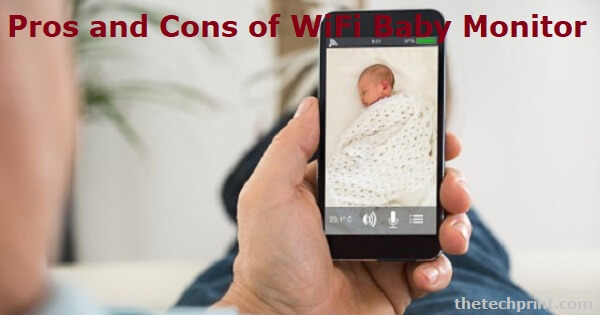As a concerned parent and a busy homeowner, you may be wondering if a WiFi baby monitor is worth the investment. Bassinets and cots with built-in baby monitors offer parents a sense of security that their infant is safe and sleeping soundly. There are three different categories: audio, video, and movement-based monitors. You can use a direct link between the monitor and parent unit to create self-contained video baby monitors. WiFi baby monitors, on the other hand, allow you to connect them to your smartphone. However, too much reliance on technology can have its drawbacks. Here are some pros and cons of WiFi baby monitor to help you make your decision.
There are several pros of WiFi baby monitor, in case you are wondering. Here are some of the most prominent ones you should consider.
One of the most significant pros of WiFi baby monitor is that there is no limit to the range. So you can be in any part of your house and still get the video and audio feed of your baby's room. Even if you are in the backyard or taking a walk around the block, as long as you have an internet connection, you can check on your little one.
Another great thing about this type of monitor is that it is very easy to install. All you need is a power outlet and a strong WiFi signal, and you are good to go. There are no complicated wires or cords that you need to worry about.
With this type of monitor, multiple users can log in and check on the baby. So, if you have grandparents or other family members who live far away, they can easily connect to the feed and see the baby.
WiFi baby monitors are also very portable. You can take them with you when you travel. As long as there is a power outlet and a strong WiFi signal, you can use it anywhere.
Most WiFi baby monitors come with both audio and video capabilities. This way, you can see and hear your baby simultaneously. Some even come with night vision so you can see your baby even in the dark. That’s the one factor that make the pros of WiFi baby monitor noteworthy.
Some WiFi baby monitors come with motion detection and heat sensors. These features are handy if you want to be alerted when your baby is moving or their room gets too hot or cold. .
With WiFi baby monitors, you can access the feed from anywhere in the world as long as there is an internet connection. So, if you are at work or on vacation, you can still check on your little one.
There are also some cons of WiFi baby monitor you should consider before buying a WiFi baby monitor. However, here are some of the most important ones.
One of the biggest problems with WiFi baby monitors is interference. If other devices in the house use the same frequency, it can cause static or even drop the signal altogether.
These devices run on separate batteries which you need to keep charged all the time. So, if there is an extended power outage, you will not be able to use the monitor.
Another concern with WiFi baby monitors is that they can be hacked. If a hacker gets a hold of your password, they can access the feed and even talk to your baby.
Sometimes, the motion detection feature can cause false alerts. So, if there is a pet in the room or the wind blows, it can trigger the signal. This may make it more difficult for you to monitor your baby and focus on other tasks. Again, one of the considerable cons of WiFi baby monitor.
There is also a delay in the video and audio feed. So, if you are trying to soothe your baby through the monitor, there might be a slight delay in their response.
Conclusion
WiFi baby monitors are a great way to keep an eye on your little one while they nap or play in their room, but there are some things you should consider before you get one. The pros and cons of WiFi baby monitors outline major points you need to bear in mind. Have you decided if a WiFi baby monitor is right for you? If not, be sure to confirm and distinguish all the baby monitor types and head to the final decision.

They help you in becoming a more present parent. A WiFi baby monitor goes one step further by allowing you to keep an eye on your child from your smartphone. Many of these monitors include built-in microphones, allowing you to talk back to your kids.
WiFi baby monitors, like any other internet-connected devices, are technically vulnerable to hackers everywhere on the planet, and you don't want them hacking into your child's bedroom. However, WiFi baby monitors can be utilized in one of two ways: on your own network or over the Internet.
According to studies, digital baby monitors located less than one meter from a crib produce almost the same amount of radiation as a cell phone tower 150 meters away.
A WiFi baby monitor consumes around 2 GB each day. Some models use 850 MB per month, while others utilize up to 3 GB. If your internet provider has a limited data usage policy, purchasing a baby monitor with 850 GB of monthly usage is a good value.